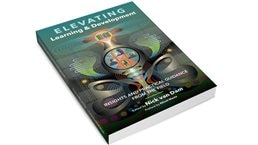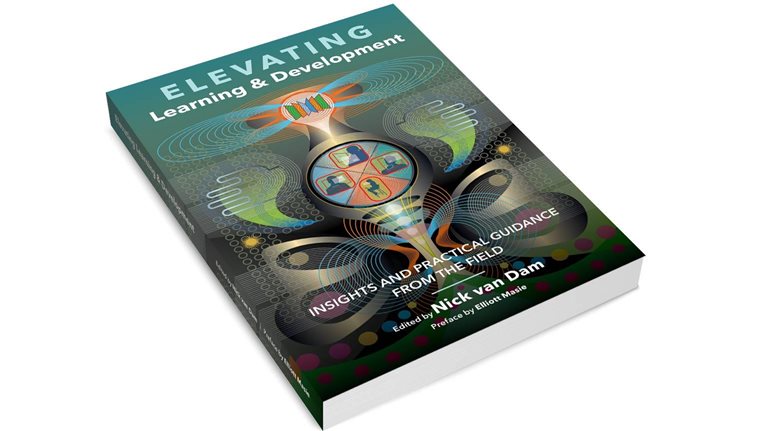Learning and development (L&D) leaders are charged with helping individuals weave together the experiences that support their continued development. And of course those experiences take place throughout the organization, not just in formal learning programs provided by L&D.
Stay current on your favorite topics
Given the variability of when and where learning takes place, it can be extremely challenging for L&D leaders to meet individual learners when and where they need support. Furthermore, career development is not a linear proposition for the vast majority of the 21st-century workforce. Careers today progress in widely diverse ways. As a result, most L&D functions struggle to determine how to support the personal and professional growth and satisfaction of their learners over time.
To navigate this new age of learning and provide the best possible learning experience, L&D professionals must make connections between the “what” (the kind of support to provide, whether emotional or intellectual) and the “how” (ways to deliver that support). They also need to understand where a learner is in his or her individual journey.
The S-curve framework—used in various disciplines to represent the beginning, rapid growth, and maturity of something via an S-shaped curve—can help L&D leaders understand the what and how for individual learners in a given role. These insights can help them design and tailor learning for various audiences, improve the learner experience, and ensure that once employees attain mastery of their role, they are primed to make the leap to the next.
How the S-curve can enable learning at the speed of business
The S-curve framework is not a new concept. The management thinker Charles Handy first applied it, also known as life cycle thinking or the “sigmoid curve,” to organizational and individual development in the mid-1990s.1 Applying this thinking to the L&D context, however, is a new, innovative, and powerful way to describe cycles of learning and development and link them over time.
In a September 2012 article in Harvard Business Review, author Whitney Johnson uses the S-curve to illustrate the development of competence in a new domain of expertise—the very essence of professional learning.2 During the initial phase of a personal learning curve, she writes, progress is slow. With further practice, though, “we gain traction . . . accelerating competence and confidence” (Exhibit 1).

This middle phase can be followed by a phase during which we plateau, becoming too comfortable with our processes. When we do our jobs in the same way over and over, tasks become automatic, and we often forget the importance of learning new things and keeping up with new developments. Eventually, our skills become out of sync with organizational or market needs. That is when it becomes crucial to leap to the beginning of a new S-curve.
If the S-curve illustrates how a particular competence might develop over time, then it stands to reason that one’s portfolio of competencies is simply the cumulative or serial sum of specific S-curves of development. Johnson encourages readers to disrupt themselves—to jump from one learning curve onto another and string together a series of S-curves to navigate a long-term journey of development and professional impact. However, each time we make a jump, it can be one of the most challenging and risky professional maneuvers we make. The next S-curve might involve changing your role or function within an organization—or changing companies altogether. And we can never be assured of a successful outcome.
It is important to note that moving from one S-curve to the next does not necessarily involve a hierarchical progression in the organization. S-curve leaps can also mean broadening a skill set or moving between functional areas (for example, expertise areas within the function) while staying at the same level of hierarchy.
Would you like to learn more about the McKinsey Academy?
It may seem safer, easier, and more comfortable not to make those leaps. But to grow beyond our comfort zones and develop sustainable careers, employees must—and L&D has a key support role to play.
Encouraging development with opportunities and rewards
We have identified four elements that determine whether professionals will successfully navigate from one S-curve to another. The L&D function has more influence over two of these elements, providing opportunities and recognizing and rewarding performance. The two remaining elements, mastering the skills of lifelong learning and developing the confidence to approach challenges in a constructive way, are up to the learner to embrace.3
Providing opportunities
Companies create both formal and informal processes for growth and development. In addition to formal, structured classes, organizations can provide employees with development opportunities across functions or geographies, temporary placements in another department or function, and job shadowing, networking, and mentoring.
The degree to which L&D leaders are involved in the development of these various types of offerings can vary among—or even within—organizations, but they should be involved. Of course, to create these opportunities, organizations need effective collaboration among related functional areas. In addition to leading formal learning, the learning function can also can support, inspire, and advocate for individual and organizational investment by increasing learners’ awareness of opportunities, fostering self-reflection, and serving as a forum for helping employees find the opportunities that are right for them, at the right time.
L&D professionals can achieve greater impact by taking a thoughtful approach, with the S-curve in mind. But at the same time, learners also have to be in the proper mind-set to make the most of their opportunities.
Rewarding performance
The more opportunity for professional growth, the more growth there will be—as long as a complementary reward system is in place. Like opportunities, rewards vary in type and are managed and influenced by several functional areas across an organization. The L&D leader’s role in contributing to the creation and maintenance of reward systems is perhaps less direct, but no less significant, than in the development of opportunities.
Business line managers within an organization’s talent system may be primarily responsible for rewards that motivate performance—such as compensation, ratings, and promotions. But in many cases, it’s the acquisition of new skills that enables the performance improvement that entitles people to the rewards. For this reason, it is extremely valuable to have regular conversations with people to discuss where they are on their S-curve and what can be done to help them continue to learn and grow. That is where learning leaders come in. They support the talent system by helping line leaders become better coaches and managers. They can also help learners develop greater self-awareness and get motivated to do the work that is most fulfilling to them and enables them to reap rewards. By being aware of how the talent systems in the organization work, L&D leaders can better design and develop solutions that support these systems.
Promoting a learning culture
If we think about an individual’s progressive series of S-curves over time as linked cycles of a professional’s L&D journey, opportunities and rewards are what encourage movement along and among those curves. Opportunities support the learner’s individual progress, and rewards provide motivation for making progress. An organization’s learning culture can, in fact, be described quite handily with reference to how widely these two factors are made available (Exhibit 2).

If a learner has reached the top of his or her S-curve and there’s no next curve visible on the horizon, he or she may become bored and lose momentum, resulting in mediocre performance and the types of attitudes described in the bottom boxes of Exhibit 2.
Even when further opportunities are available, learners at the top of an S-curve might choose to forgo the leap to the next, staying in their current roles even though they are technically ready to move on. All kinds of factors can play into the decision to stay too long in a role, including a lack of opportunities elsewhere, inadequate rewards, and intolerance for risk. In some cases, this is not a problem as long as the employee continues to perform.
If the employee is stagnating and the work suffers as a result, however, L&D leaders must collaborate with their colleagues across the organization’s talent system to find solutions. When those solutions are found, benefits accrue to both the learners and the organization. Learners are fulfilled, personally and professionally, and the organization benefits from having more capable and engaged employees.
S-curves in action: Learner archetypes
The implications of “S-curve based thinking” for L&D are perhaps best illustrated by looking at tangible archetypes and examples, each covering different attempts to move along a role-based S-curve—or across curves.
Archetype 1: Starting a new S-curve
Rae joined a highly regarded professional services firm 18 months ago, and now she’s been promoted from consultant to project leader. While excited, Rae is also anxious. She knows the promotion means that she’ll face higher expectations. Although she’s read the competency grid for her new role and has a general sense of the job from observing project leaders in the past, she’s not sure how to make the transition. Moreover, her new role is a lonely one: project leaders don’t usually work in the same vicinity, and although Rae technically has a boss, the two of them won’t work closely together over sustained periods.

How L&D can support Rae
Rae has made the leap from her previous S-curve and now sits at the bottom of a new one. L&D’s role is perhaps obvious in this case, but a deliberate application of S-curve thinking can significantly sharpen the L&D strategy for supporting employees who are starting a new role compared to the “here’s a crash course” approach, by:
Offering experiential learning that lets Rae practice the role in a risk-free way. It is not sufficient to hand Rae a description of the new role’s responsibilities. L&D can offer all new or promoted hires the opportunity to practice new responsibilities through highly experiential live workshops and immersive simulations.
Shifting mind-sets and mental models—not just building skills. As L&D professionals know, any role change or move up the corporate ladder requires more than skill development—it requires a change in mind-set. In a move to management, for example, the technical skills that helped Rae succeed as an individual contributor are less important than the ability to think strategically, see the bigger ecosystem, and develop her team. Simulations, again, are useful in encouraging reflection, as are techniques such as reverse role plays and small-group discussions with peers.
Mapping role requirements to Rae’s existing strengths and weaknesses. L&D can make a huge contribution to launching Rae into her new S-curve through honest, one-on-one conversations about which skills she needs to develop and what she might need to leave behind. Rae has reached a new level where the attributes that helped her succeed in her prior S-curve no longer apply. She may have previously underused strengths that L&D professionals can now help her to emphasize.
Archetype 2: Ascending the current S-curve
Gustavo supervises a team of claims adjusters for a large property and casualty insurer—a position he’s held for the past nine months after spending four years as a claims adjuster. After some initial struggles, Gustavo feels increasingly confident in his role and is performing it competently. However, both he and his manager recognize that he has untapped potential—and a chance for Gustavo to exhibit truly distinctive performance in the role in the year or two ahead.

How L&D can support Gustavo
Conventional L&D approaches often underserve people like Gustavo on this part of the S-curve—partly because learners themselves may not express much need, and partly because the employee is not explicitly changing roles. But employees at this juncture are often in need of more tailored, on-the-spot support as they seek to consolidate gains and fully apply what was learned at the start of the S-curve. Specific, S-curve-aligned L&D strategies to support employees like Gustavo include:
Providing robust on-the-job performance support. As a dedicated discipline of L&D, performance support—learning aids available at the point or moment of need while someone is performing a job—is burgeoning. The “front-middle” part of the S-curve is an ideal point for performance support and working to offset the forgetting curve—described by psychologist Hermann Ebbinghaus as exponential memory loss during the 30 days following learning.4 L&D can also employ tactics to change behavior in many ways, including digital platforms that seamlessly integrate with the claims-processing applications on Gustavo’s mobile device, stand-alone apps or chatbots, or lower-tech means such as laminated placards offering step-by-step help, job aids, and pointers to reference material.

Elevating Learning & Development: Insights and Practical Guidance from the Field
Activating and strengthening the informal learning ecosystem. Increasingly, L&D’s role is not only to support the learner directly but also to elicit a higher level of informal learning support from managers, coaches, and peers. This support is especially useful for employees such as Gustavo who have completed initial orientation and new job training and are now expected to perform. Specific L&D actions include doubling down on coaching and leadership training for managers, creating internal marketplaces for coaching support and help, and providing flexible platforms for employees to engage with people in similar roles and with subject matter experts for social learning and knowledge sharing.
Offering Gustavo opportunities to define a vision of himself in the role. It is only after Gustavo has weathered the initial transition to his supervisor role that he can define what his peak performance in the role could look like. At this point, Gustavo is no longer focused on simply keeping his head above water; he has enough experience to determine how his existing strengths fit with role requirements. L&D can help Gustavo work through the necessary reflection, accompanied by tools and forums to help gather feedback from others and to create an action plan that complements formal reviews. These tools can increase individual commitment to learning and accelerate ascension up the S-curve.
Archetype 3: Preparing to leap to the next S-curve
For the past six years, Julia has been distinctive in her role as a process engineer for a global technical services firm serving the energy industry. She knows through conversations with leaders in her office that she’s seen as a terrific candidate for a senior management role in the coming 12 to 18 months—which in her company would mean taking on new responsibilities related to business development, as well as a likely move to another continent.

How L&D can support Julia
L&D can play a vital role in helping employees like Julia, who are at or near the top of their current S-curve, explore and then transition to new roles and paths. As L&D professionals, we often make the critical mistake of either leaning in too late—when the person has already been thrust onto their next S-curve via promotion or transfer—or not engaging at all. In either case, the result is increased risk that the employee plateaus, grows bored, and even regresses in performance.
The reality is that if employees get continual support while navigating their current curve—especially when it complements other talent-management levers such as rotations or mobility programs—they will experience fewer growing pains when they transition to the next.
As previously noted, L&D should create shorter learning journeys to support various stages of growth: an S-curve covering a longer period of time (for example, five years) can be built out of a series of shorter S-curves (for example, six months or a year). These journeys consist of a mix of group learning programs and individually tailored learning solutions that meet at-the-moment needs of the employee. These journeys can also be supported with digital learning solutions that learners can access at their own pace. This strategy helps to minimize the gaps between one S-curve and the next and makes the transition as smooth as possible.
One example of an L&D strategy that can help smooth transitions between S-curves is focusing on building the specific skills and capabilities an employee will need in the future. Learning can provide risk-free opportunities for employees like Julia to begin developing these skills; and offer advice for how to hone them in her current role. For example, a program might specifically focus on topics such as gravitas, empathy, and team-based problem solving—some of the most common stumbling blocks facing new managers. Taking this program 6 to 18 months prior to making the transition to manager would give them time to practice these skills in the context of their current position.
The S-curve, in conjunction with an organization’s talent system, offers a simple but effective framework for supporting learners at every stage of their careers. L&D has a crucial role to play at each step—but leaders must understand existing (and ideal) rewards and opportunities, know where each learner stands, and offer the right support at the right time. Simultaneously, there is huge value for learners in understanding their own learning journeys and taking responsibility for their learning and development.
This new dynamic also requires L&D professionals to develop new skills. Conceptualizing learning and development through the lens of S-curves means thinking about learning as a journey and designing solutions as such.
A version of this chapter is included in Elevating Learning & Development: Insights and Practical Guidance from the Field, August 2018.


